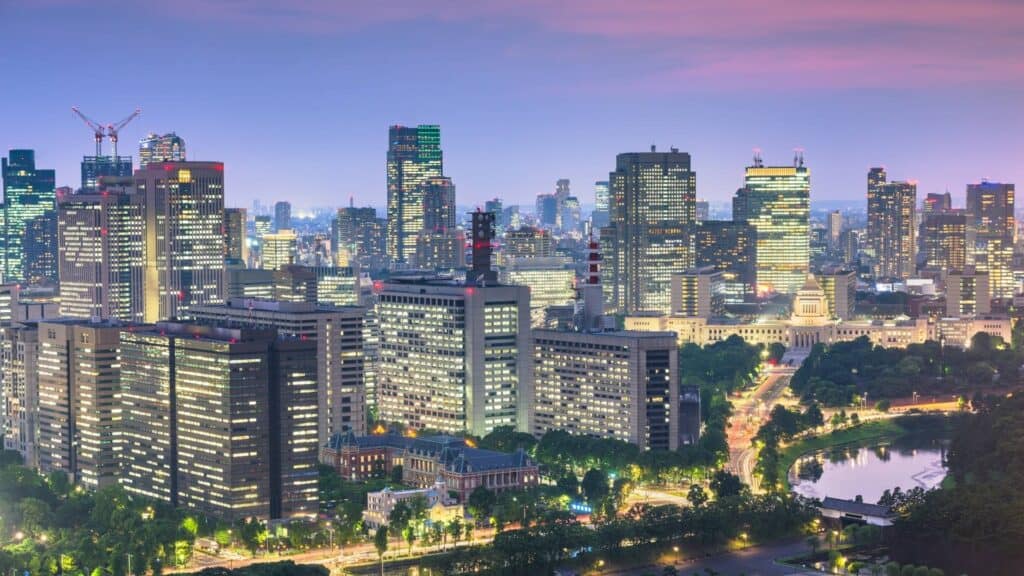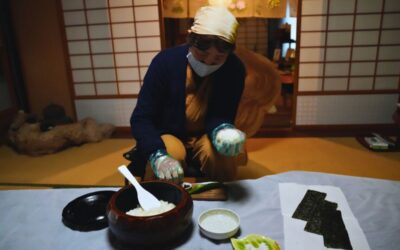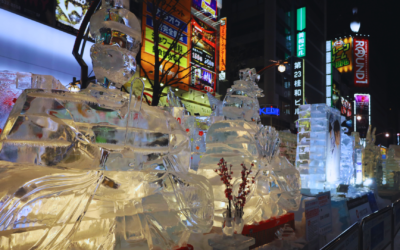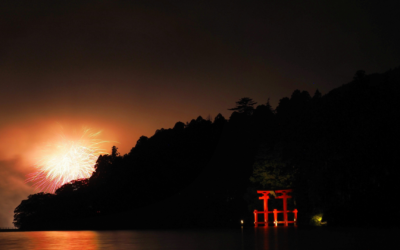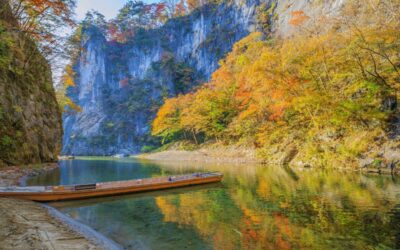Have you heard of Chiyoda Ward in Tokyo? It’s one of the city’s 23 wards, known for its unique blend of neighbourhoods and attractions. Chiyoda Ward is home to the central functions of Japan, including the Imperial Palace, the Diet Building, and the Kasumigaseki government office district. These landmarks make it a significant and prestigious area in Tokyo. The neighbourhoods surrounding the Imperial Palace, such as Marunouchi, Otemachi, Hibiya, Kojimachi, Bancho, Kudanshita, and Kanda, each offer their own distinct experiences and sights.
Chiyoda Ward is not just about government buildings and offices; it also offers a variety of cultural and historical attractions. You can explore the beautiful gardens of the Imperial Palace or visit the historic Kanda Myojin shrine, which hosts one of Tokyo’s major festivals. The area is also known for its luxury living spaces, particularly in the Bancho and Kojimachi districts.
If you’re interested in the different aspects of Chiyoda Ward, from its prestigious schools and residential areas to its vibrant business districts, there’s plenty to discover. Whether you’re exploring its historical sites, enjoying the urban lifestyle, or learning about its role in Japan’s government, Chiyoda Ward offers a rich and diverse experience.
A Quick Primer to Chiyoda Ward

Chiyoda Ward is the centre of Tokyo, housing the central functions of Japan. The Imperial Palace is at the heart of the district, surrounded by the Diet Building, the Kasumigaseki government office district, and other national centres of government. The areas of Marunouchi, Otemachi, Hibiya, Kojimachi, Bancho, Kudanshita, and Kanda, which are the core of Tokyo, encircle the Imperial Palace. Chiyoda-ku is considered the most prestigious of the 23 wards and an awe-inspiring place to live. Despite its elite status, the number of tower condominiums is gradually increasing, reflecting a growing trend of returning to the city centre.
The population, which fell to less than 35,000 during the 1995 bubble period, has now increased to approximately 64,000 and continues to grow. It remains a highly desirable area for the wealthy and elite who move to Tokyo from rural areas of Japan. However, most areas in Chiyoda Ward are office districts. It is challenging to find a decent supermarket in Kanda, Akihabara, or Jimbocho. The largest number of residents live in the Bancho area, home to Bancho Elementary School, one of Tokyo’s most prestigious public schools.
Other areas have either new residents in tower apartments or locals who have lived there for generations.
Living in Chiyoda
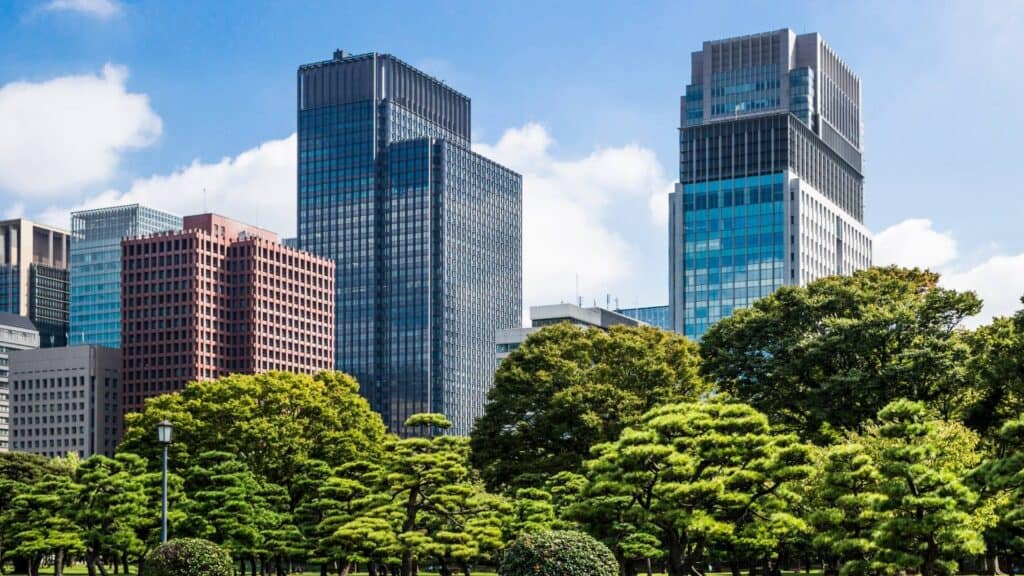
Chiyoda-ku, the heart of Tokyo, is generally divided into two areas: the former Kojimachi Ward and the former Kanda Ward. The former includes Nagatacho and Kasumigaseki, Japan’s central business districts, and the Bancho district, Japan’s most expensive residential area, popular among mothers aiming for their children to attend Tokyo University. The latter has been a popular residential area since the Edo period.
The Kanda Festival, held at the Kanda Myojin shrine, is one of the three major festivals in Edo, along with the Sanno Festival at Sanno-Hie Shrine in Chiyoda Ward and the Fukagawa Festival at Tomioka Hachiman Shrine in Monzennaka-cho.
Although the population of Chiyoda Ward has increased with the return to the city centre, it remains relatively low. In Bancho and Kojimachi, where luxury condominiums stand side by side, living without a substantial income is impossible.
History of Chiyoda Ward
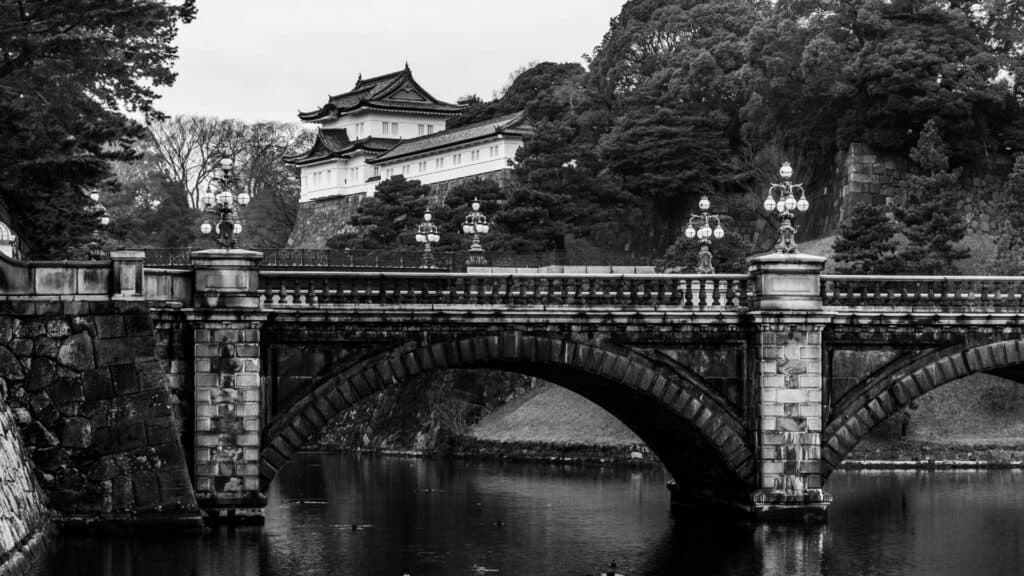
The origin of Chiyoda-ku traces back to Chiyoda Castle, another name for Edo Castle. As it is closest to Edo Castle, the area used to host many samurai residences for those serving the Edo Castle. Edo Castle housed the Tokugawa Shogunate for over 250 years. When the Meiji government came into being through the Grand Council of State, it became the Emperor’s residence. The Diet Building, government ministries and agencies, and other government buildings were constructed around the Imperial Palace after the Meiji period.
With the enactment of the Law for the Formation of Towns and Villages, the Kojimachi and Kanda wards were established. The Great Kanto Earthquake and World War II caused severe damage, destroying two-thirds of both wards by fire. After the war, Kojimachi and Kanda merged to form Chiyoda Ward. Despite its historical roots, modern Chiyoda blends tradition with contemporary living.
Characteristics of Chiyoda Ward
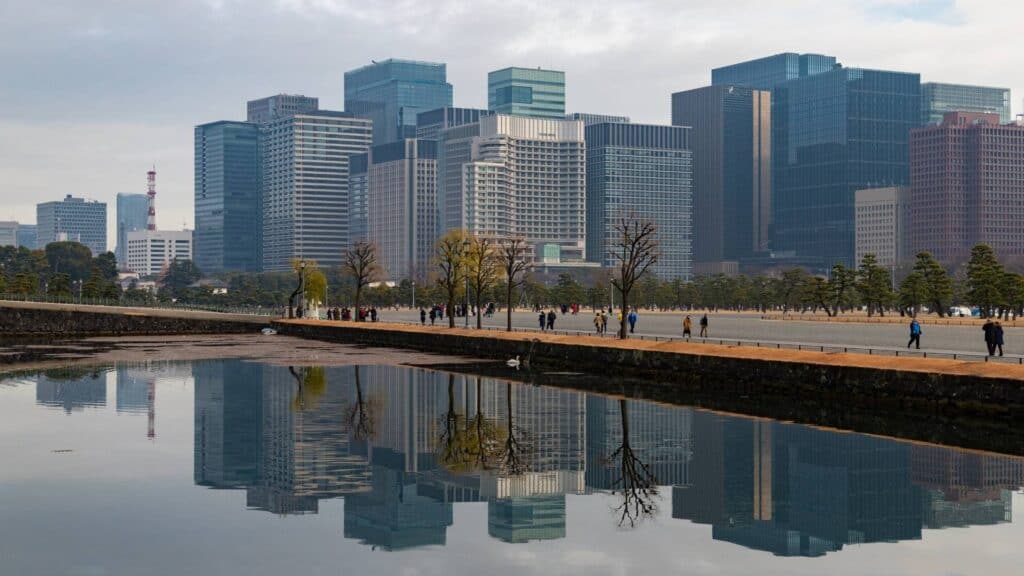
Headquarters of Major Companies Concentrated in Chiyoda Ward
Chiyoda-ku has long been the centre of Tokyo, primarily due to the concentration of headquarters and rental offices of major corporations in Otemachi and Marunouchi. Many megabanks, symbolising Japan’s financial hub since the Edo period (1603-1867), are also located here. In recent years, numerous commercial facilities have been built in the Marunouchi area, transforming it into a thriving shopping and office district.
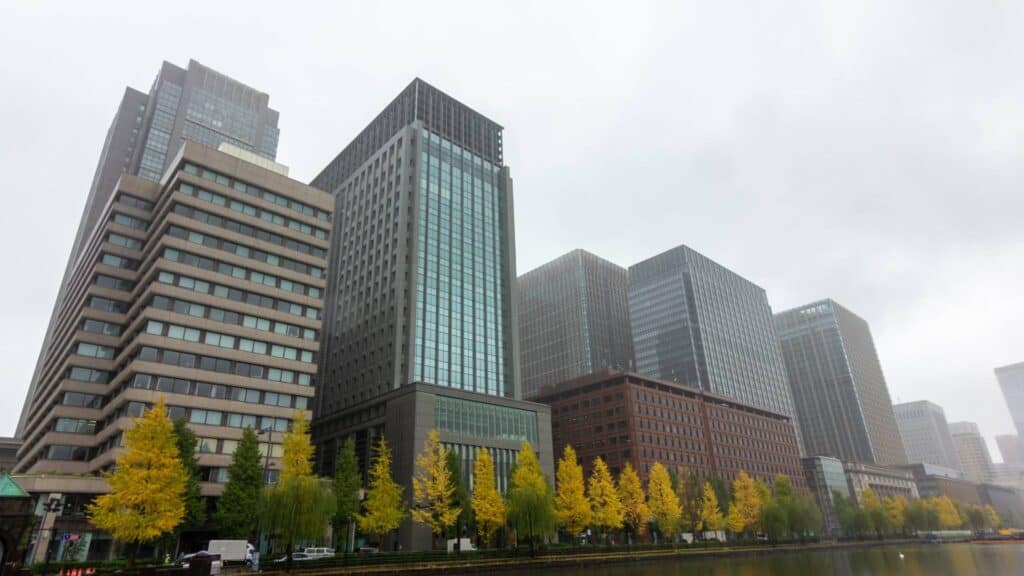
Abundant Office Space for Rent
Chiyoda Ward is home to numerous companies, both large and small, each fitting the unique characteristics of the area. There are many restaurants and convenient transportation options throughout Chiyoda-ku, making it an ideal location for businesses. Given the high demand for office space, the number of available properties is abundant.
Akihabara, known for its small and medium-sized companies, features many low-rise office buildings. Despite its evolution into a mecca for anime, idols, and subcultures, Akihabara remains rooted in its historic electronics district.
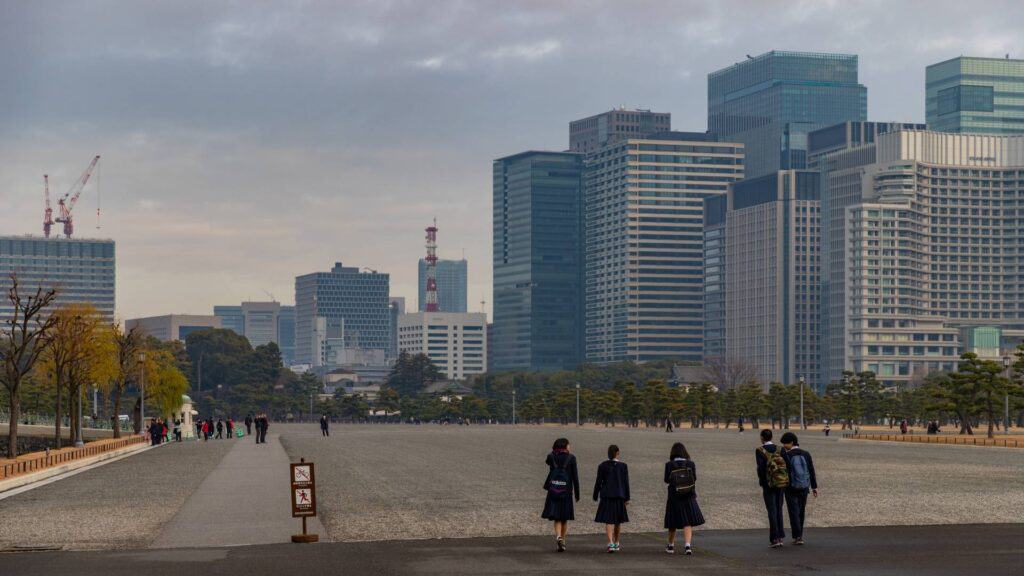
Kanda Area with Many Publishing Companies
The Kanda area, originally known as a student town, has undergone significant redevelopment in recent years, creating a mix of old and new companies. This area boasts many wholesale stores, bookstores, used bookstores, and publishing companies. The presence of printers and bookbinders, essential for book production, remains strong.
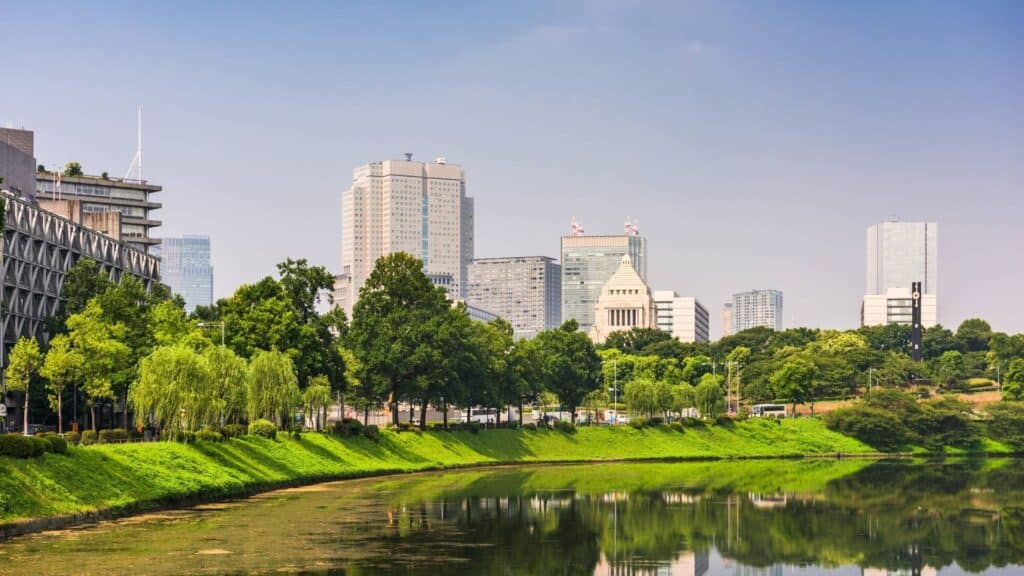
An Office District
Chiyoda-ku is renowned for its office districts and the Imperial Palace. As a residential area, it is somewhat unbalanced, with more office workers commuting during the day and fewer residents at night. This results in Chiyoda-ku having the smallest population among Tokyo’s 23 wards. The high cost of housing and the vast difference in daytime and nighttime populations contribute to its reputation as a business-centric ward.
Areas of Chiyoda Ward
Along the JR Yamanote Line
Tokyo 東京

Tokyo Station, the gateway to the capital, is where all JR lines, including the Shinkansen and conventional trains, converge. The Marunouchi side features an elite, chalet-like upscale office district. Despite the modern facade, remnants of the postwar era, such as dirty alleyways and buckwheat noodle stalls, can still be found beneath the underpass.
Yurakucho 有楽町

Yurakucho is home to the Tokyo International Forum, located on the former site of the Tokyo Metropolitan Government Building. The area retains a postwar atmosphere, reminiscent of the streets filled with the mood of defeat when the GHQ headquarters was located nearby. The passageway under the underpass towards Shimbashi Station still holds traces of this history.
Kanda 神田

Kanda is a bustling business area despite its proximity to Tokyo Station. Part of the area, untouched by war, features many copper-sheeted buildings and rich urban heritage. The red brick underpass and Tokyo’s first modern sewage system, the Kanda Sewer, are notable historical sites. While some old drinking districts have disappeared, the area retains a unique charm.
Akihabara 秋葉原

Akihabara is Japan’s representative electric town and otaku hub. Once a gathering place for professionals centred around the Kanda fruit and vegetable market, it now hosts numerous foreign cell phone shops. Despite these changes, the historic electronics district retains its core identity. High-rise office buildings and complexes in
Along the JR Chuo Line
Ochanomizu 御茶ノ水

The view from Ochanomizu Bridge clearly shows the border between the Yamanote and downtown areas. Ochanomizu is a student town where Nihon University, Meiji University, and Sundai Preparatory School are located, and in front of the station is a musical instrument district. The Meiji University Museum, where torture devices from around the world are on display, is a coveted destination for subculture Kamigyo residents, along with the Parasite Museum in Meguro.
Suidobashi 水道橋
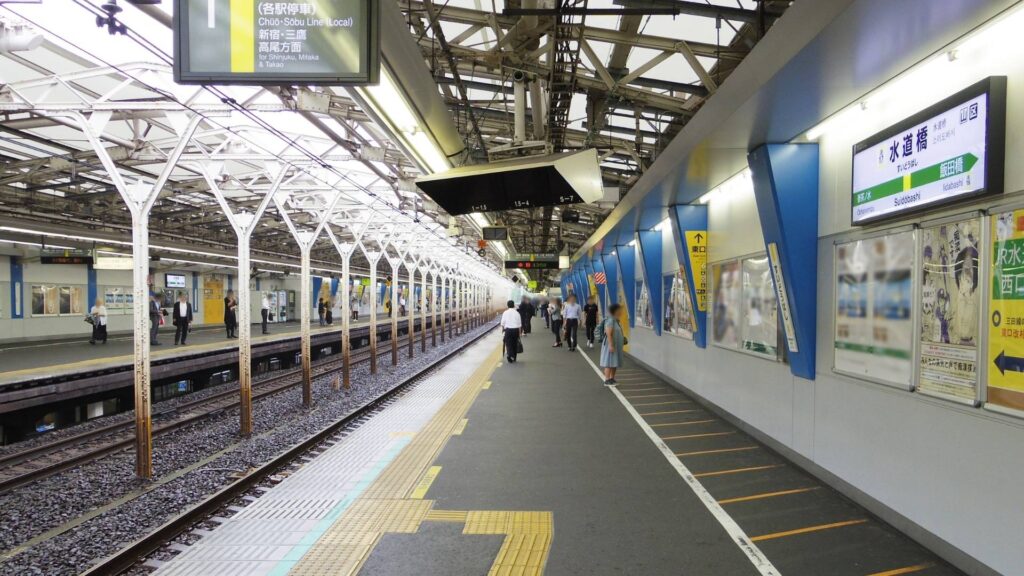
Suidobashi is an extension of Jimbocho, an old book town, and a town that reeks of “men of age,” with a few student food shops and seedy bookstores here and there. It retains a nostalgic charm, complemented by modern facilities.
Iidabashi 飯田橋
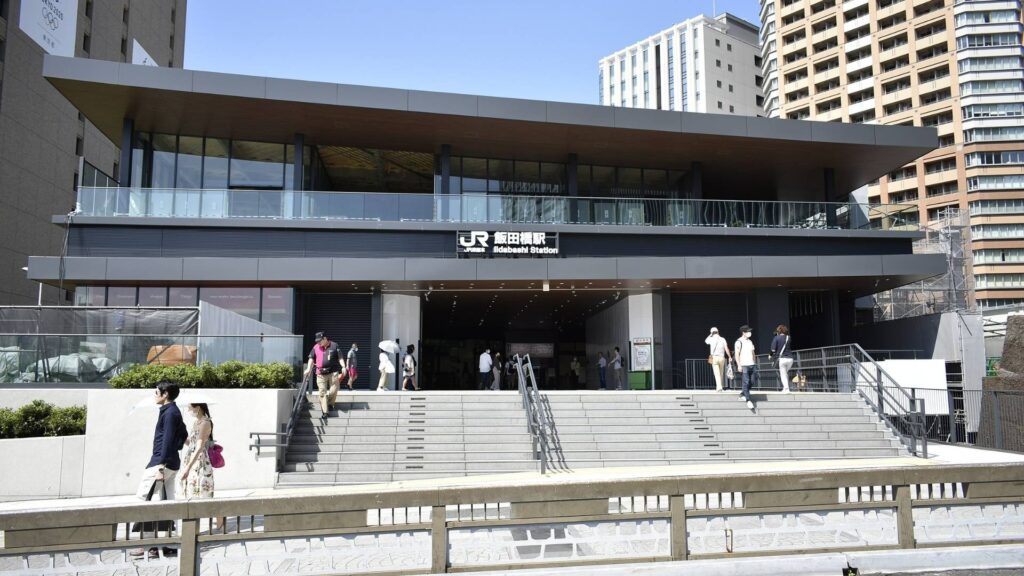
Tokyo Daijingu is a power spot where women in their 30s and 40s who have missed their chance of marriage pray frantically for love. After the completion of a 40-story tower apartment building, one of the best in Chiyoda Ward, the population has skyrocketed. The Sobu Line platforms are notorious for accidents where people fall through the cracks, and the platforms are currently being relocated.
Ichigaya 市ヶ谷

This is the home of the Ministry of Defence. The Ichigaya Fish Center, a fishing pond, is still in operation. The Bancho district, the most expensive residential area in Japan, is the nearest station.
Yotsuya 四ツ谷

The Gakushuin Elementary School and the Geihin-kan are outside of Chiyoda Ward. The Kojimachi exit leads to Sophia University, a Christian institution. Every year during the cherry blossom season, Sotobori Park becomes chaotic with rowdy students. Hosei University has issued a “Hanami ban” for students.
Along the Subway Line
Otemachi Nijubashimae 大手町・二重橋前

A major office area near Tokyo Station. Tokyo’s most haunted spot, the “Taira no Masakado’s Grave,” remains untouched despite repeated development. This shrine, built to pacify a vengeful samurai ghost, is a unique attraction. The Nijubashi Bridge, where the Imperial Palace is open to the public, is regularly visited by tourists.
Hibiya 日比谷
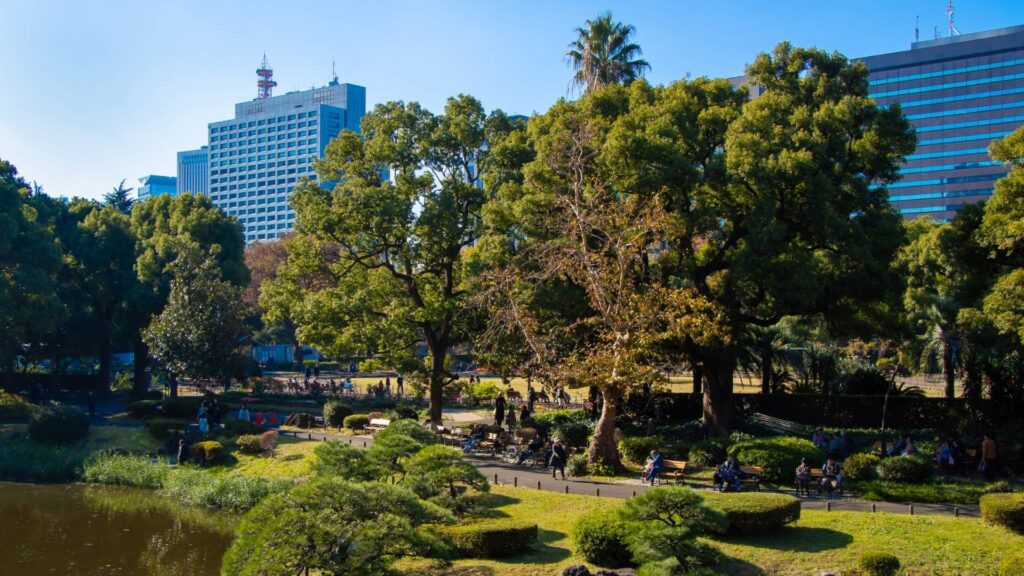
Hibiya Park is an oasis in the heart of Tokyo. The “New Year’s Eve Haken Mura” (New Year’s Eve Dispatch Village) was held in the park at the end of 2008, with tents for homeless people scattered throughout.
Kasumigaseki and Sakuradamon 霞ヶ関・桜田門

This well-known government office district gathers all the ministries and agencies of the Japanese government. The Ministry of Agriculture, Forestry and Fisheries, overseeing Japan’s agricultural policy, is reputed for its cafeteria.
The National Diet Building, Nagatacho, and Tameike-Sanno 国会議事堂前・永田町・溜池山王
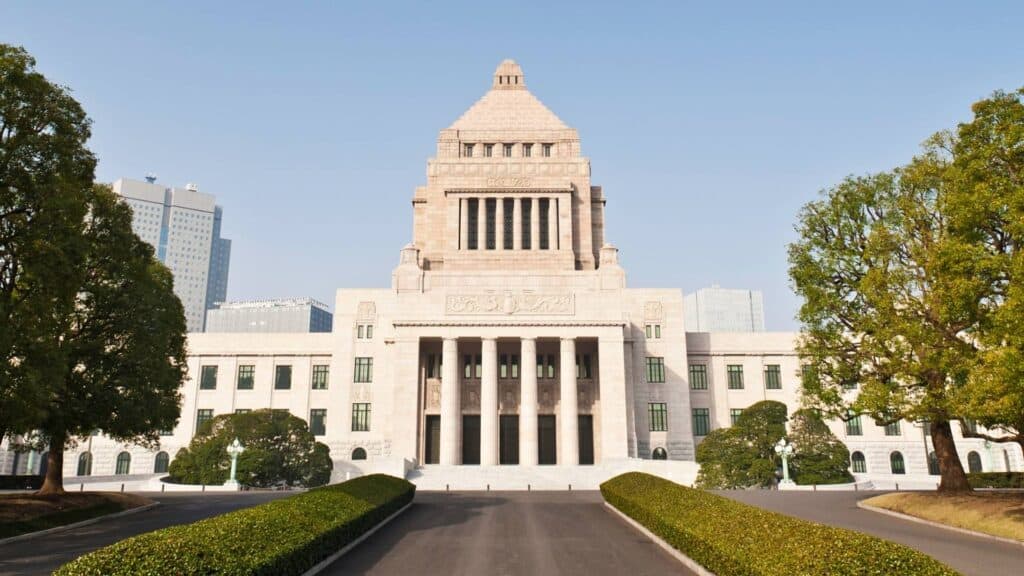
The National Diet Building and the Prime Minister’s official residence are central to Japan’s political system. In Nagatacho 1-chome and the former Sannencho, detached houses existed until a few years ago.
Kojimachi and Hanzomon 麹町・半蔵門
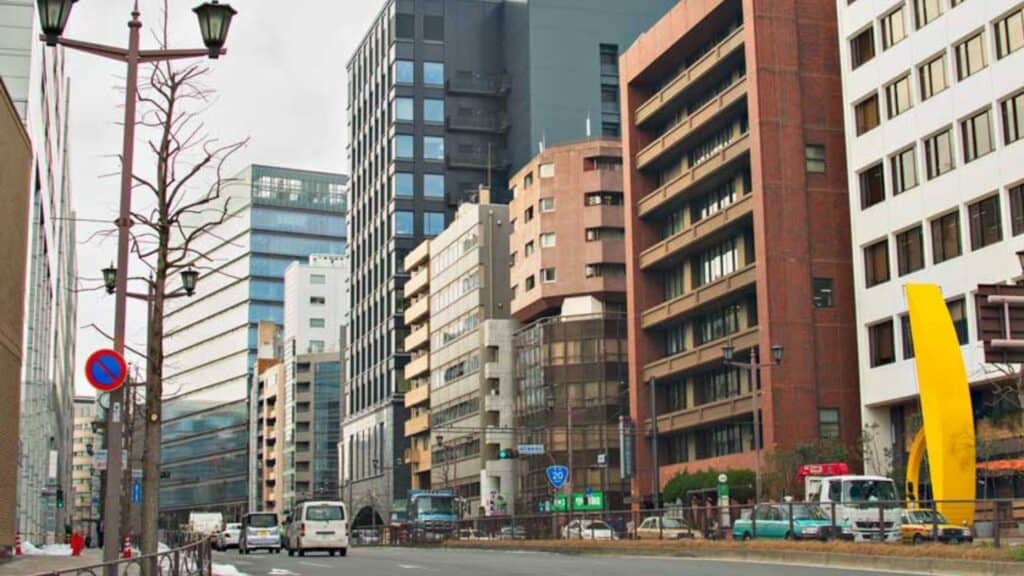
The old home of the commercial broadcaster Nippon Television. Popular programmes like “Zoom in! Morning!” were broadcast nationwide from Kojimachi. Kyoichi Tsuzuki, a well-known figure in the subculture field, has his building here.
Kudanshita 九段下
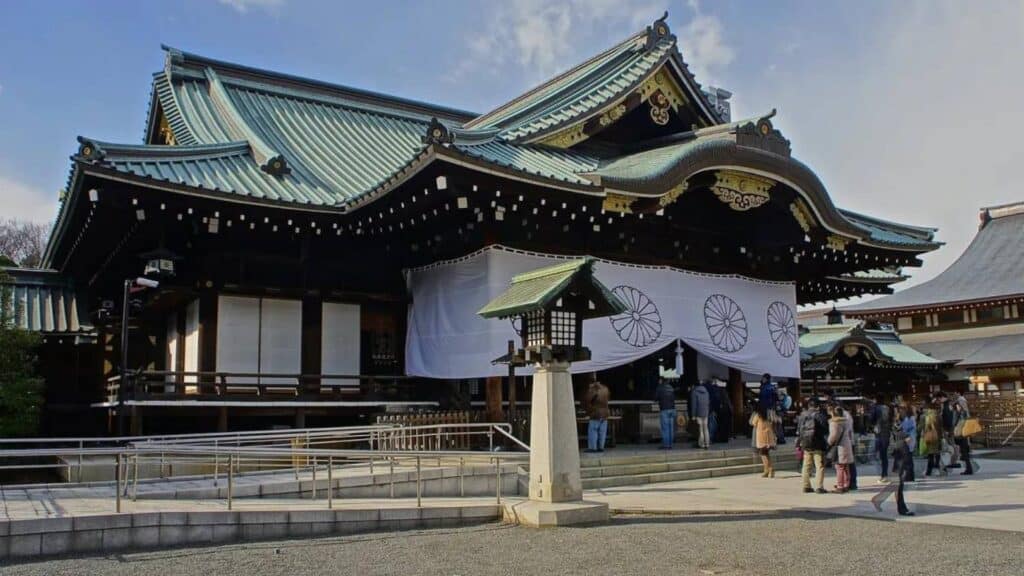
The Yasukuni Shrine attracts many worshippers and right-wing groups on the anniversary of the founding of the country and the end of the war every year. Behind the shrine is the central headquarters of the General Federation of Korean Industries, considered the de facto “embassy” of North Korea, with which Japan has no diplomatic relations. It is a town that is busy on both sides.
Jimbocho 神保町
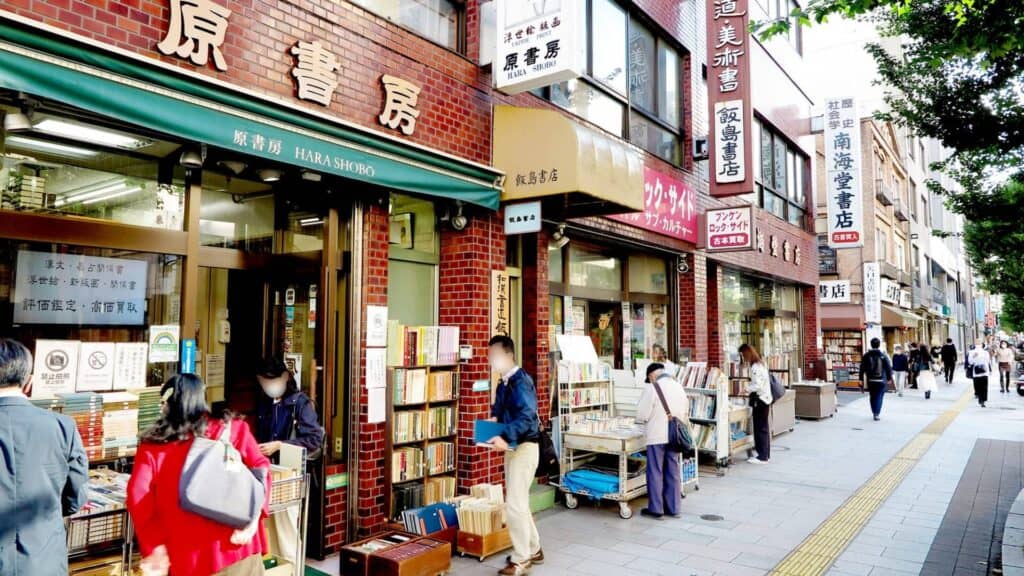
Jimbocho is home to one of the largest antiquarian bookstores in Far East Asia. It is also a fierce battleground for curry enthusiasts. Notable sites include Mickey’s, a rundown arcade, and the Kudanshita Building, a prewar building that has since been demolished.
Takebashi 竹橋
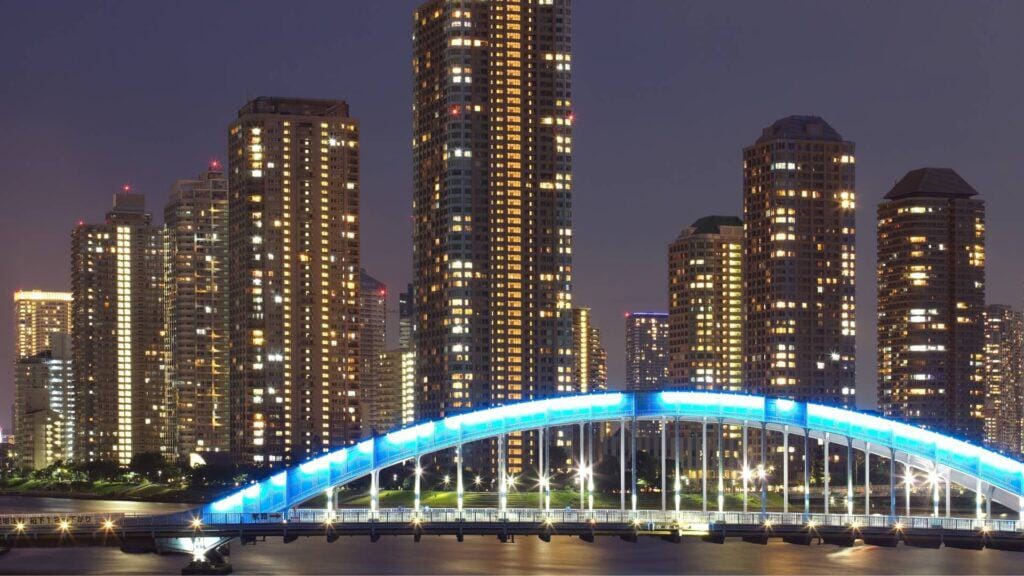
Takebashi is a minor station on the Tozai subway line on the north side of the Imperial Palace. The Palace side Building, a retro Showa-era building, houses the headquarters of the Mainichi Newspapers.
Ogawa-machi, Awaji-cho, and Shin-ochanomizu 小川町・淡路町・新御茶ノ水
A “chic downtown” in Chiyoda Ward, famous for Kanda Yabusoba, a long-established restaurant rebuilt after a fire. Along Yasukuni Street, many sporting goods stores can be found.
Iwamotocho 岩本町
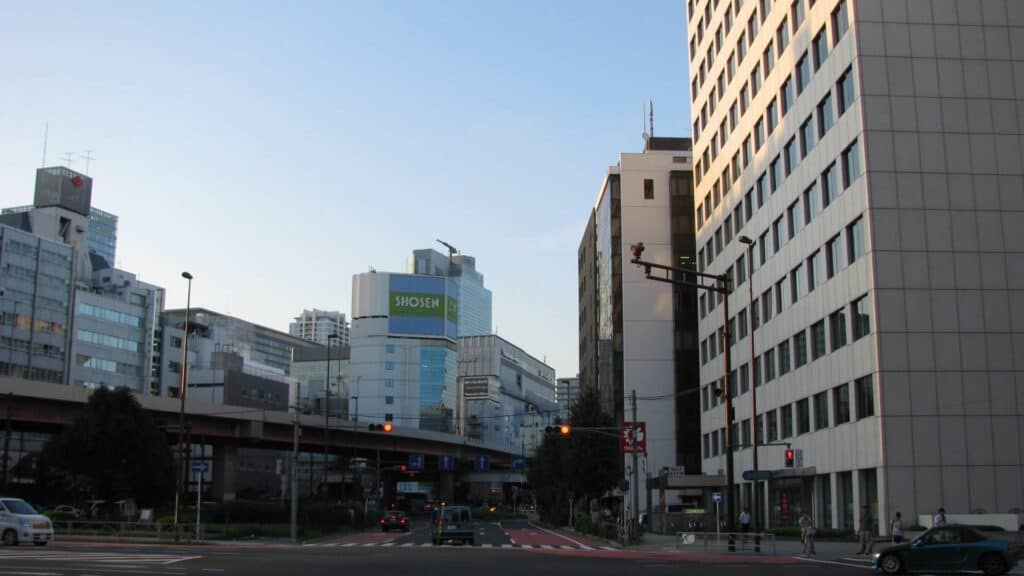
The area around the station is full of Daily Yamazaki convenience stores. The headquarters of Yamazaki Baking Company is located here.
Suehirocho 末広町
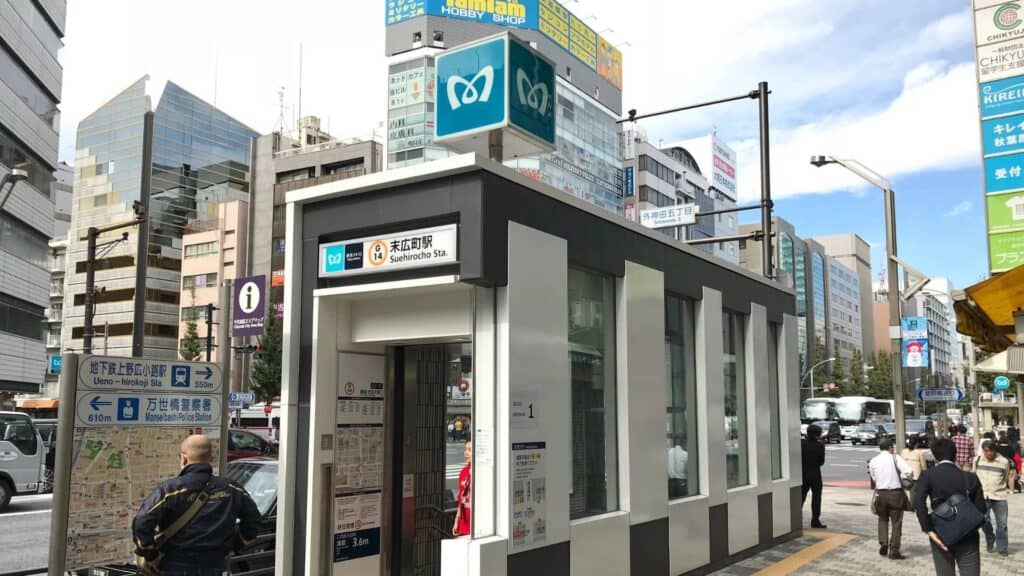
Suehirocho is a subway station on the Ginza Line, located on the outskirts of Akihabara’s electric town. Visitors should be cautious of store galleries targeting timid otaku men walking along the street.
Things to Do in Chiyoda
Idemitsu Museum of Arts 出光美術館
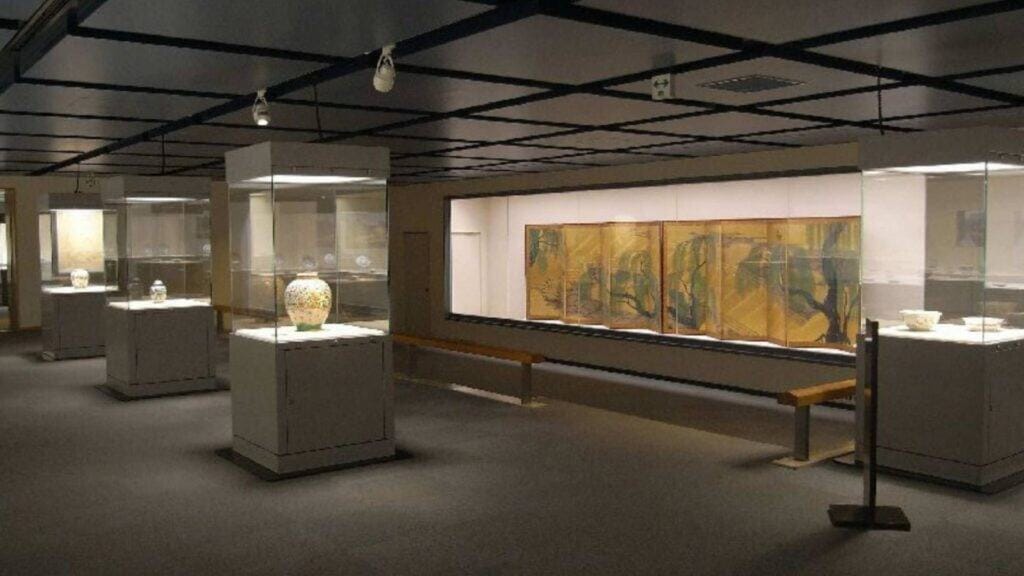
Located on the 9th floor of the Teigeki Building, facing the moat of the Imperial Palace, the Idemitsu Museum of Arts showcases Japanese and Chinese paintings, ceramics, and other Oriental antiques. The museum also has a room dedicated to Georges Rouault and a ceramic shards room displaying pieces from around the world.
Find out more about Idemitsu Museum of Arts here on Google maps.
Imperial Theatre 帝国劇場
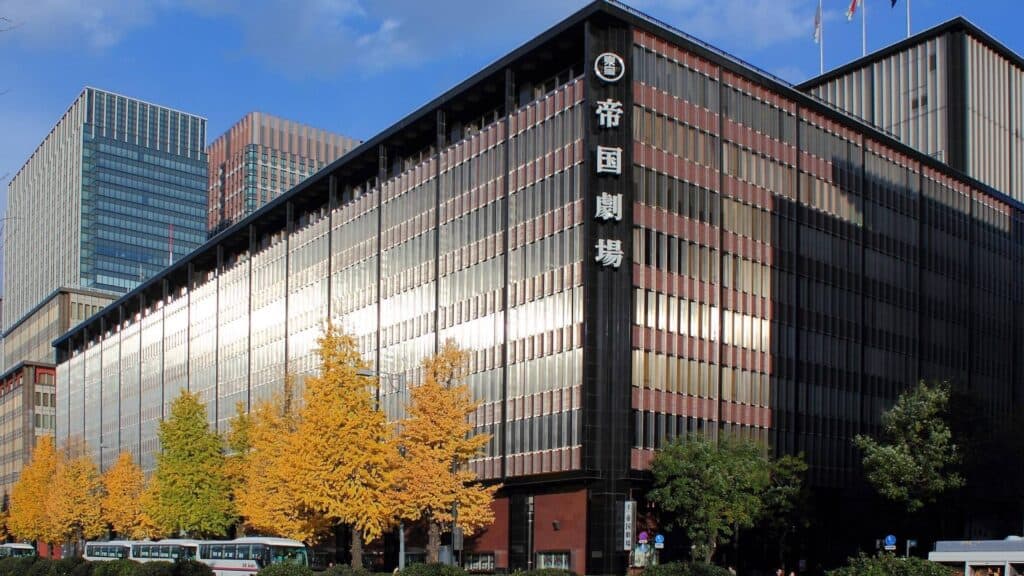
Completed in 1911, the Imperial Theatre is Japan’s first Western-style theatre. It has hosted numerous musicals, plays, orchestras, and other masterpieces. The lobby features shining stained glass windows and lighting decorations, while the grand staircase exudes history and prestige.
Find out more about Imperial Theatre here on Google maps.
Tokyo Daijingu 東京大神宮
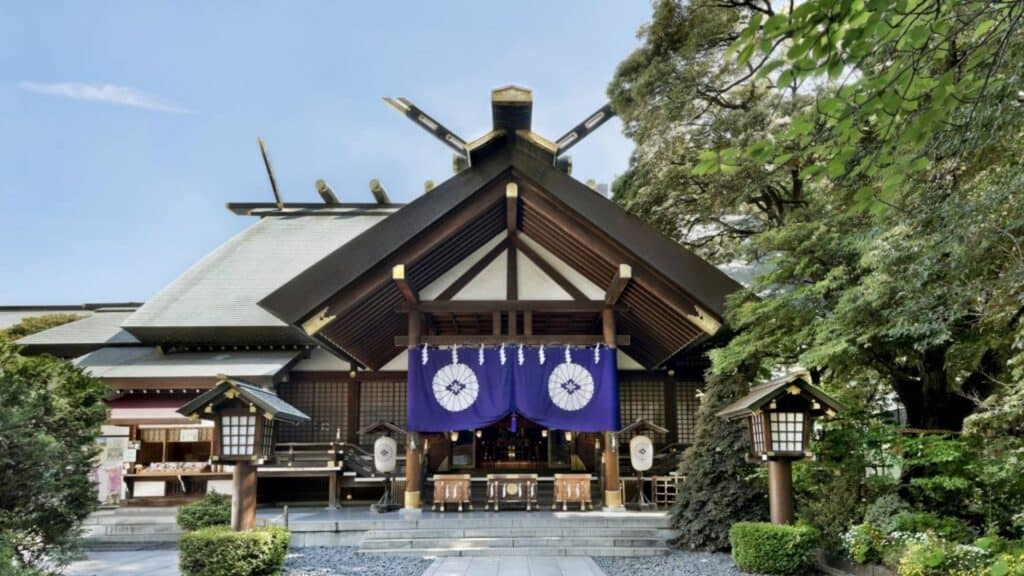
Built in 1880 as a distant shrine of Ise Jingu Shrine, Tokyo Daijingu is affectionately known as “Tokyo’s Ise-sama.” Originally located in Hibiya, it was moved to Chiyoda-ku after the Great Kanto Earthquake. The shrine is dedicated to Amaterasu and Toyoke and is a popular wedding venue, being the originator of Shinto wedding ceremonies.
Find out more about Tokyo Daijingu here on Google maps.
Hibiya Park 東京都立日比谷公園
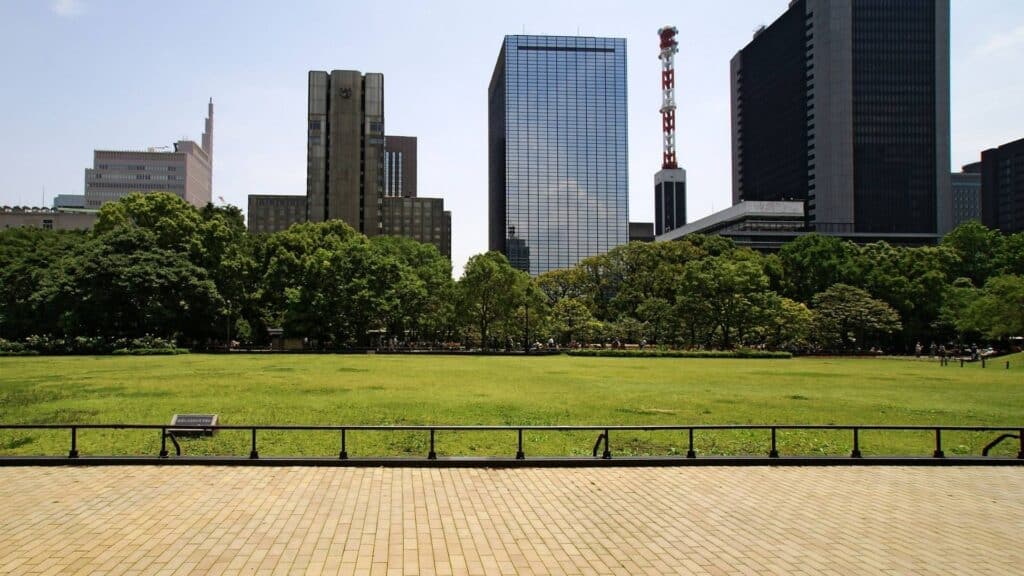
Hibiya Park, established in 1903 as Japan’s first modern Western-style park, is an urban oasis. The park is known for its beautiful flowers and trees, hosting various events throughout the year, including gardening shows and a Christmas market.
Find out more about Hibiya Park here on Google maps.
Yasukuni Shrine 靖国神社
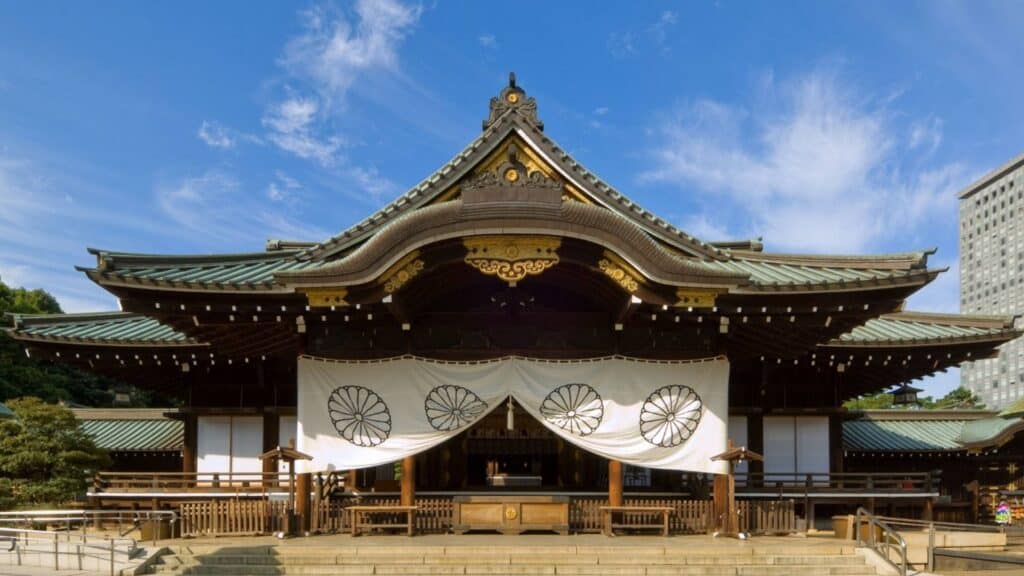
Located in Kudan-kita, Chiyoda-ku, Yasukuni Shrine is dedicated to military personnel who died in service to Japan. The shrine enshrines over 2,466,000 heroic warriors from various periods, including the late Edo and Pacific War. Yasukuni Shrine is also a famous cherry blossom viewing spot, with around 400 cherry trees on its grounds.
Find out more about Yasukuni Shrine here on Google maps.
Hie Shrine 日枝神社
Hie Shrine, located in Nagata-cho, Chiyoda-ku, originated in 1478 and has been revered as the guardian of Edo Castle and the Imperial Palace. The current shrine pavilion features 123 board paintings commemorating its reconstruction. The uniquely shaped Sanno torii gate and the annual Sanno Festival, one of the three major festivals in Edo, are highlights.
Find out more about Hie Shrine here on Google maps.
National Museum of Modern Art, Tokyo 東京国立近代美術館

Situated near the southern entrance of Kitanomaru Park, the National Museum of Modern Art was the first national art museum in Japan, opening in 1952. The museum features various exhibitions, including the “MOMAT Collection,” which showcases approximately 200 works from its collection of over 12,500 pieces. Special exhibitions are held several times a year.
Find out more about National Museum of Modern Art, Tokyo here on Google maps.
National Theatre of Japan 国立劇場
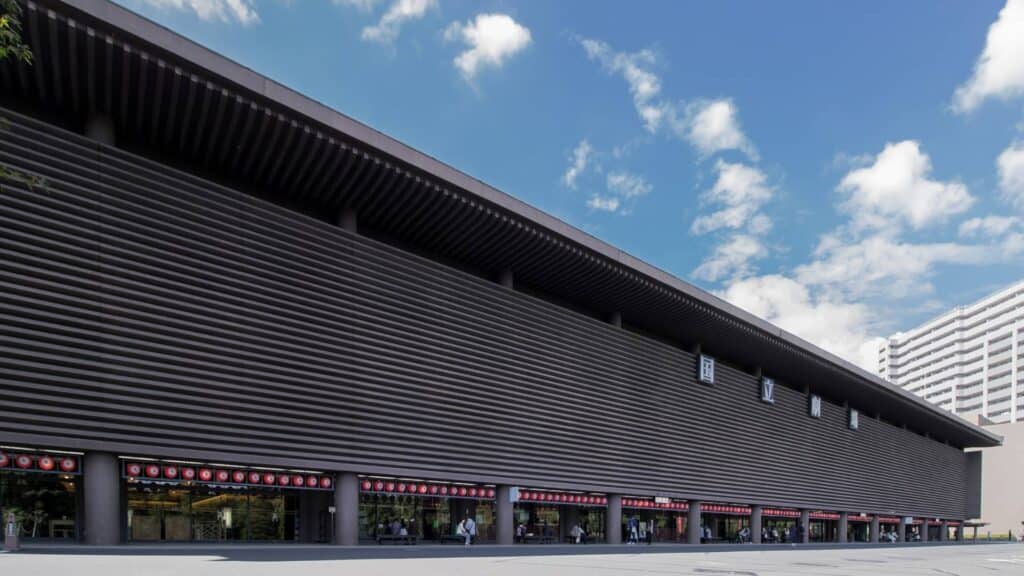
Located in Hayacho, Chiyoda-ku, the National Theatre is a performance hall dedicated to traditional Japanese performing arts. The theatre hosts Kabuki, Japanese dance, Bunraku, Hogaku, Gagaku, Shomyo, and folk performing arts. The front garden is a popular cherry blossom viewing spot, hosting a “Cherry Blossom Festival” from late March to early April.
Find out more about National Theatre of Japan here on Google maps.
KITTE Marunouchi KITTE 丸の内
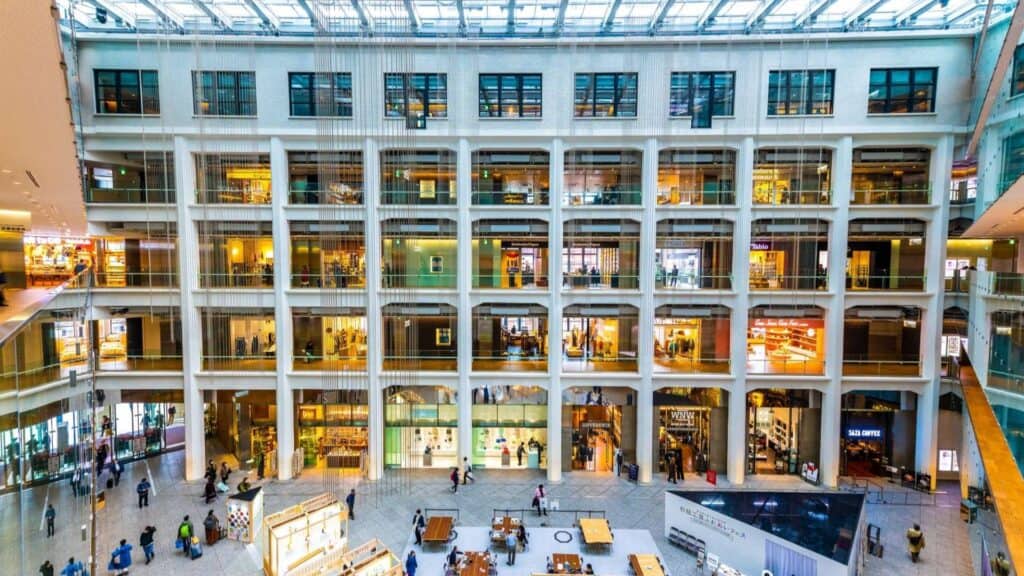
KITTE is a commercial complex that opened in 2013 in the former Tokyo Central Post Office building near the Marunouchi South Exit of JR Tokyo Station. The seven floors house gourmet restaurants, speciality stores, and sophisticated shops themed around “Japanese sense of beauty” and “real clothes for adult women.” The artistic atrium interior and the rooftop garden are must-sees.
Find out more about KITTE Marunouchi here on Google maps.
Mitsubishi Ichigokan Museum 三菱一号館美術館
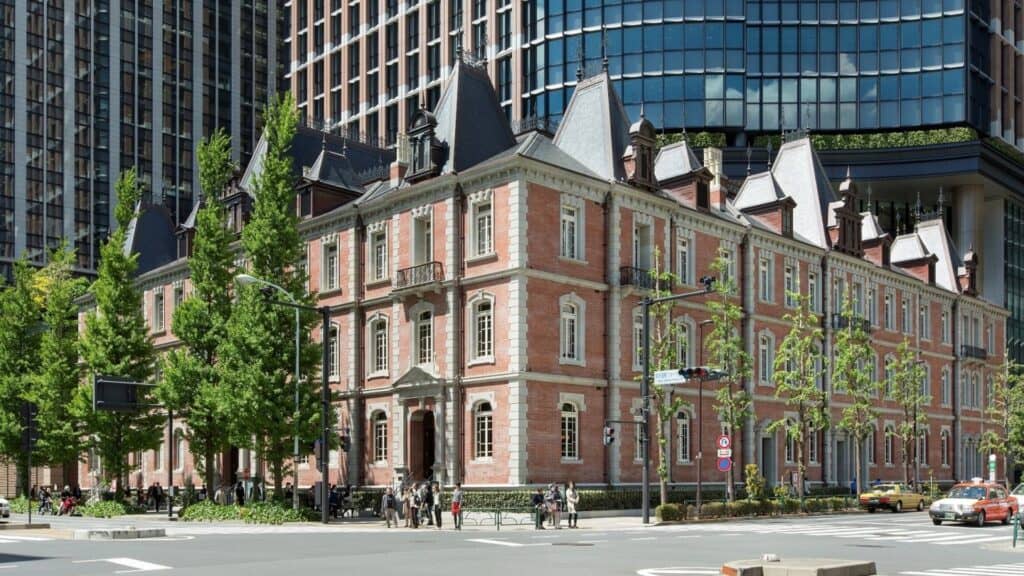
The Mitsubishi Ichigokan Museum, an art museum in Marunouchi, focuses on modern art. The building is a restoration of Mitsubishi Ichigokan, Marunouchi’s first office building, designed by British architect Josiah Conder in 1894. Special exhibitions featuring modern art from the late 19th and early 20th centuries are held three times a year.
Find out more about Mitsubishi Ichigokan Museum here on Google maps.
Science Museum 科学技術館
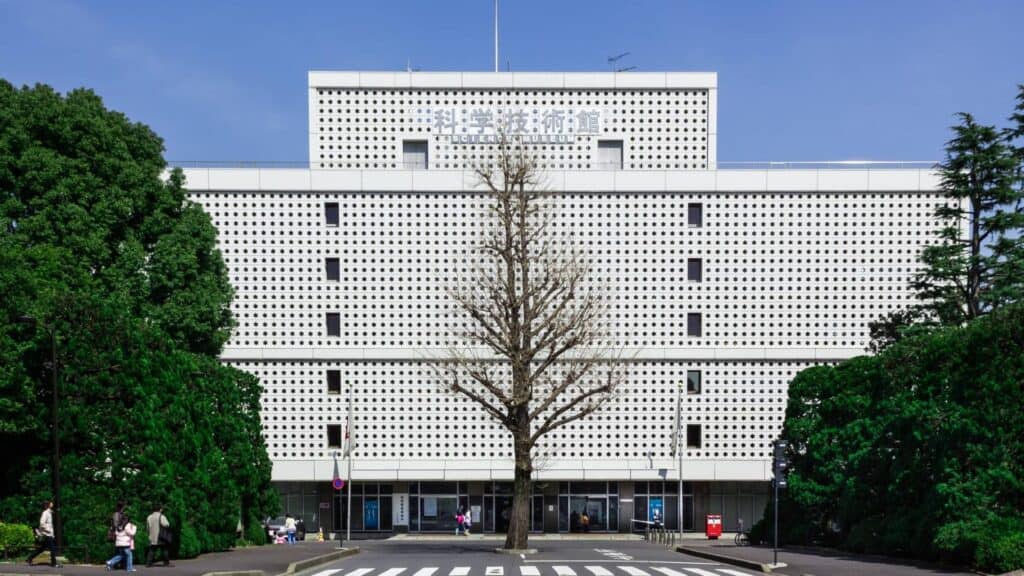
The Science Museum features about 20 themed exhibition rooms across four floors. Visitors can engage with science and technology through interactive exhibits, experimental shows, and craft workshops. The Science Hall, a full-scale theatre with a capacity of 410 people, is ideal for lectures, seminars, and presentations.
Find out more about Science Museum here on Google maps.
Tokyo Station Gallery 東京ステーションギャラリー
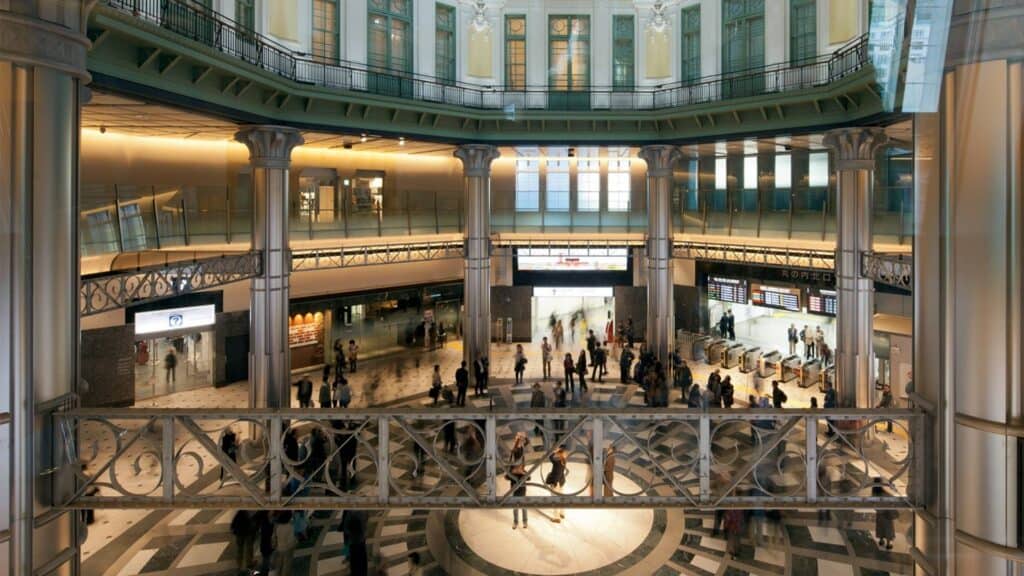
Located in the Marunouchi Station Building, the Tokyo Station Gallery reopened in 2012 after restoration work. The museum hosts exhibitions in various genres, including modern and contemporary art, railroads, architecture, and design. The red brick walls, a symbol of the old building, add to the gallery’s charm.
Find out more about Tokyo Station Gallery here on Google maps.
National Showa Memorial Museum 昭和館
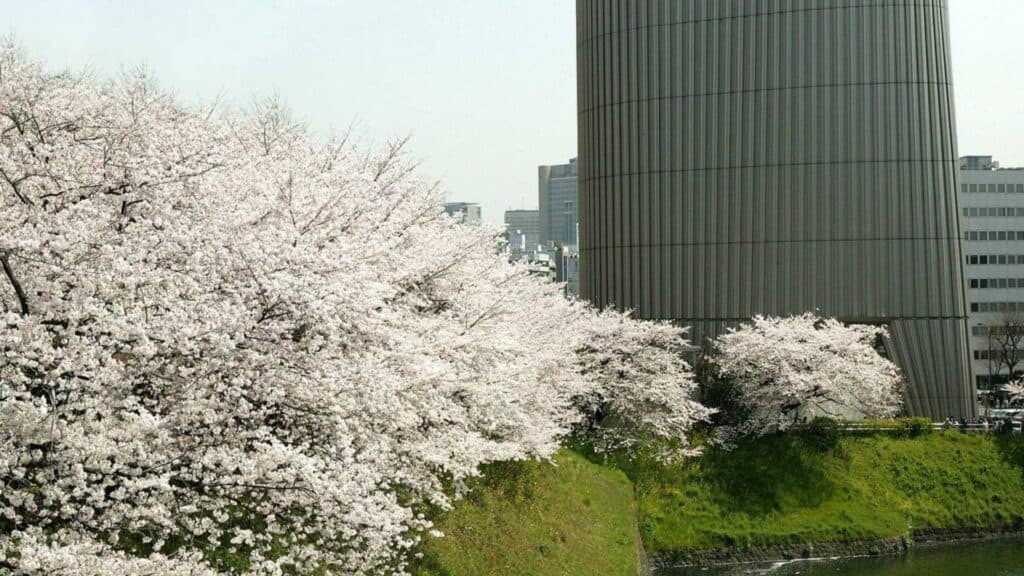
The National Showa Memorial Museum has welcomed over 5.3 million visitors since its opening in 1999. It provides insights into the hardships of national life during and after World War II. Admission to the permanent exhibition is free for elementary and junior high school students, who can learn through interactive exhibits and videos.
Find out more about National Showa Memorial Museum here on Google maps.
Akihabara UDX Akiba Ichi Restaurant & Shops 秋葉原UDXレストラン&ショップ アキバ・イチ

Located within the Akihabara Crossfield, Akihabara UDX Akiba Ichi Restaurant & Shops is an iconic office complex in Akihabara. It houses restaurants, speciality stores, event spaces, a theatre, a hospital, and various other facilities.
Find out more about Akihabara UDX Akiba Ichi Restaurant & Shops here on Google maps.
Events in Chiyoda
Kanda Festival 神田祭
The Kanda Festival is one of Tokyo’s major traditional festivals, held at the Kanda Myojin shrine. It features elaborate parades and mikoshi (portable shrines), drawing large crowds each year.
Hie Shrine Sanno Festival 日枝神社山王祭
The Sanno Festival, held every June at Hie Shrine, is one of the three major festivals in Edo. The 300-meter-long procession is a spectacular sight, attracting many visitors.
Recommended Accommodations in Chiyoda Ward
Oakwood Premier Tokyo (5 Stars)
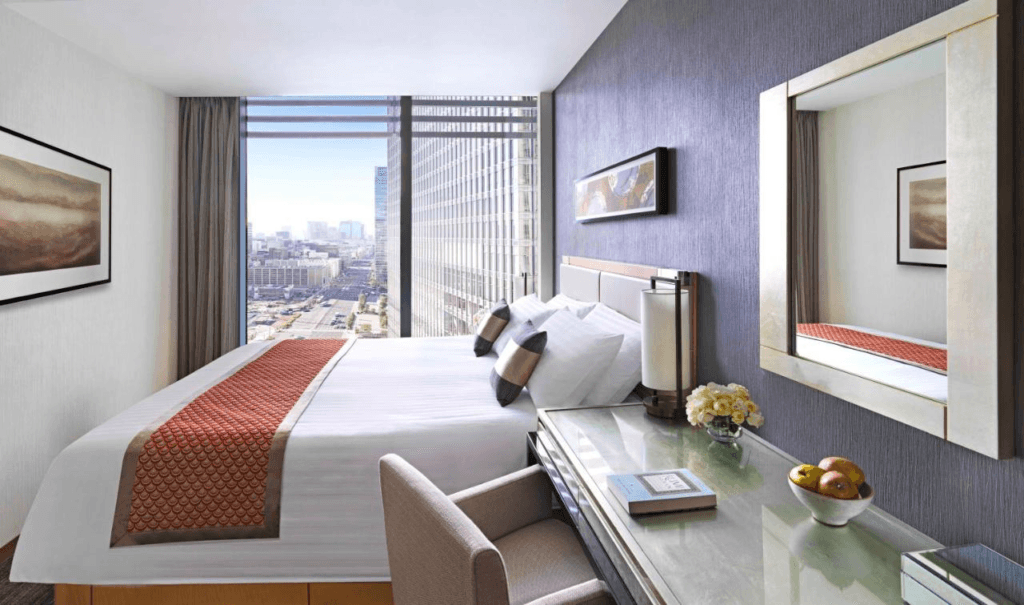
Oakwood Premier Tokyo offers luxury serviced apartments with hotel-like services, located just a 2-minute walk from JR Tokyo Station’s Yaesu North Exit. The property is designed to offer a retreat in the centre of Tokyo and features rooms with modern amenities.
Ascott Marunouchi Tokyo (5 Stars)
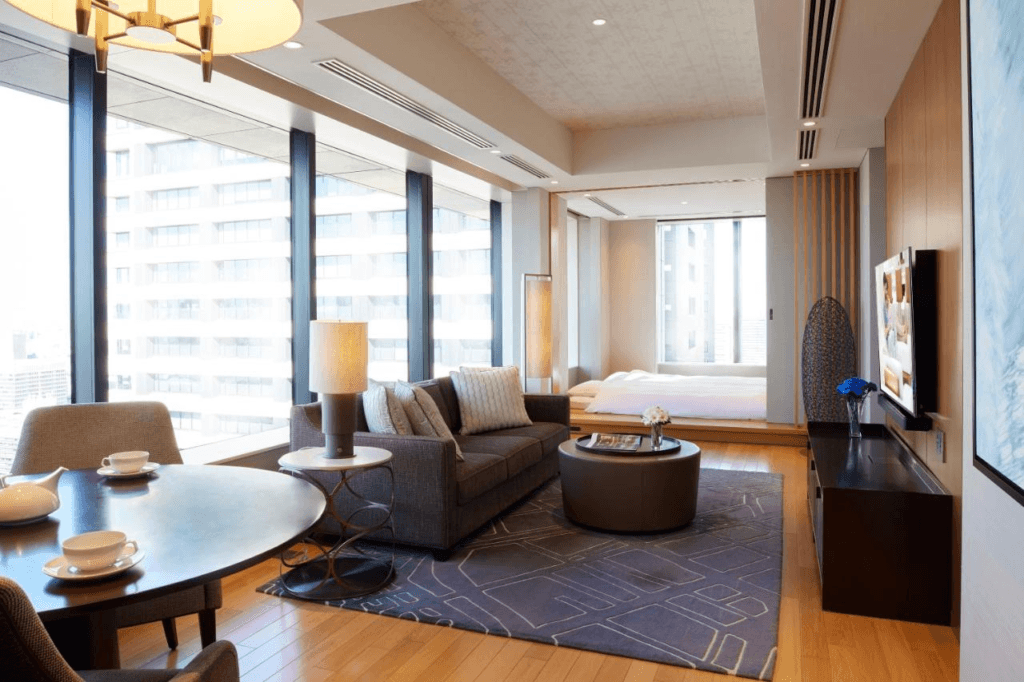
Situated in the centre of Tokyo, Ascott Marunouchi Tokyo is just 800 meters from Tokyo Station. Elegantly furnished rooms on the upper floors boast city views. The hotel offers free WiFi throughout the property and an on-site fitness centre.
Imperial Hotel Tokyo (5 Stars)
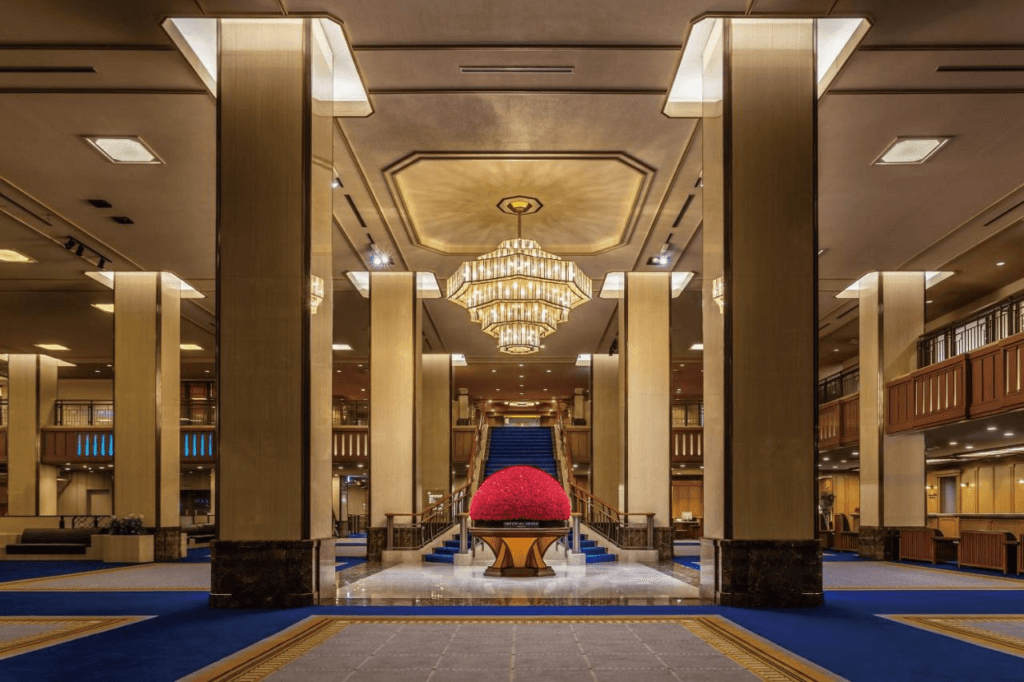
Imperial Hotel Tokyo, a prestigious hotel renowned for its first-class hospitality since 1890, is located centrally with easy access to Ginza, Hibiya, and Yurakucho stations. The hotel features a fitness centre, an indoor swimming pool, and a beauty massage salon.
Sakura Cross Hotel Akihabara (3 Stars)
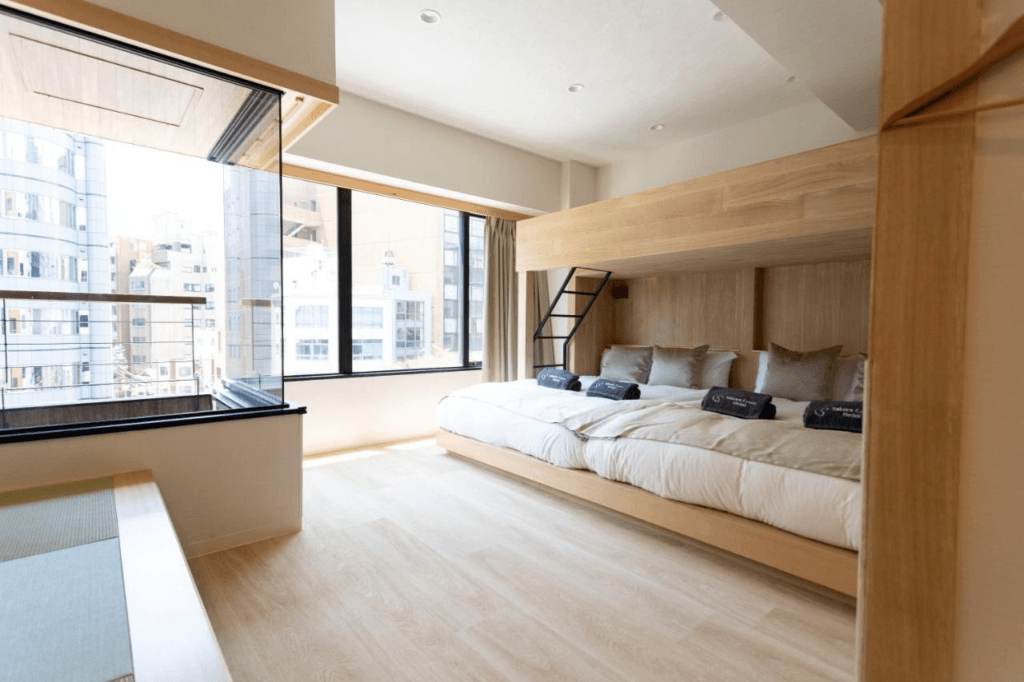
Sakura Cross Hotel Akihabara is located in central Tokyo, just 200 meters from Yanagimori Shrine. The hotel offers air-conditioned rooms with free WiFi and balconies.
Super Hotel Premier Akihabara (3 Stars)
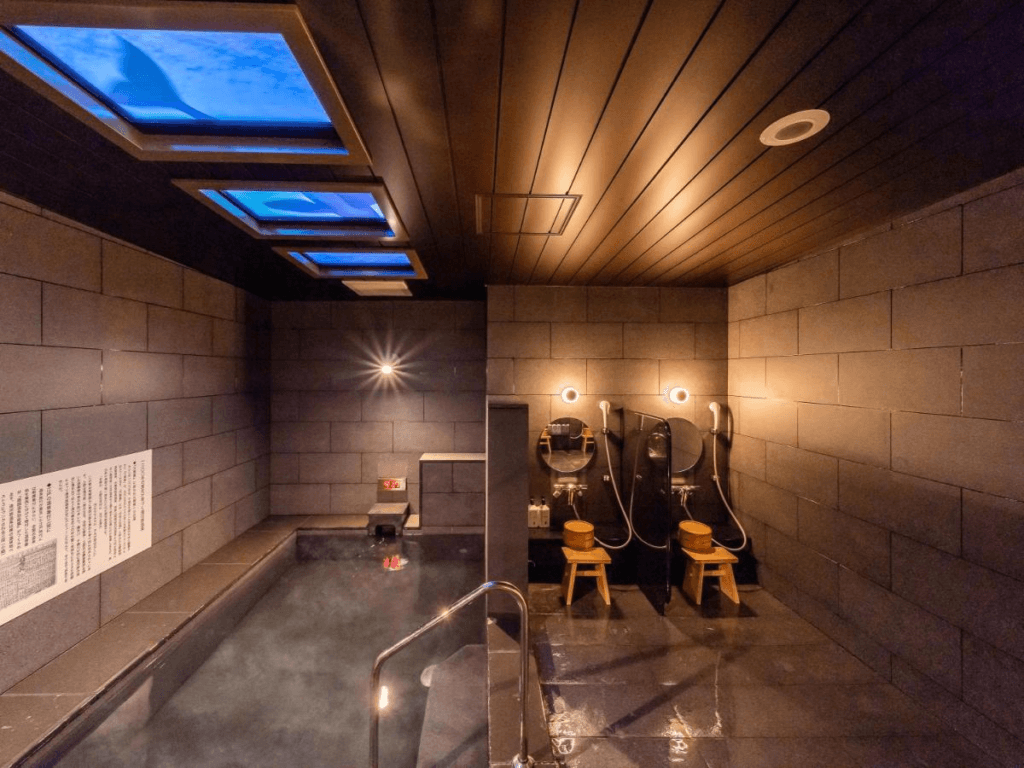
Located 90 meters from Yanagimori Shrine, Super Hotel Premier Akihabara offers air-conditioned rooms with free WiFi. The hotel features a hot spring bath and allergy-free rooms, providing a relaxing stay.
Ochanomizu Hotel Shoryukan (3 Stars)
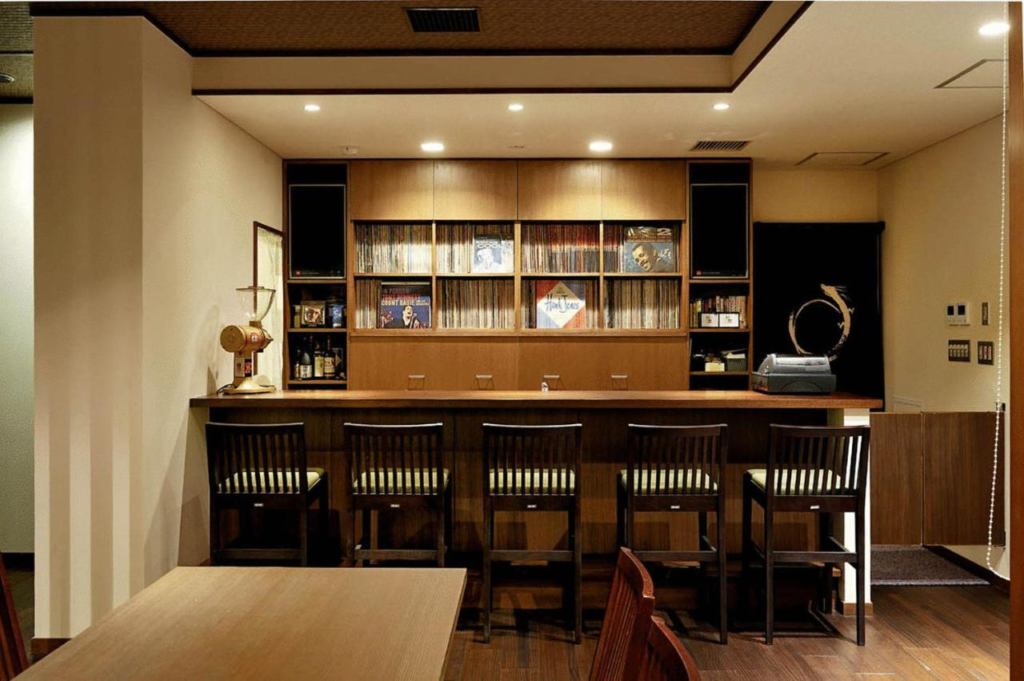
Shoryukan Hotel, located 550 meters from JR Ochanomizu Train Station, offers rooms with private bathrooms and flat-screen TVs with satellite channels. Complimentary Japanese breakfast is provided. The hotel includes both Japanese-style rooms with tatami flooring and futon beds, as well as Western-style rooms.
Artist Hotel – BnA STUDIO Akihabara (3 Stars)
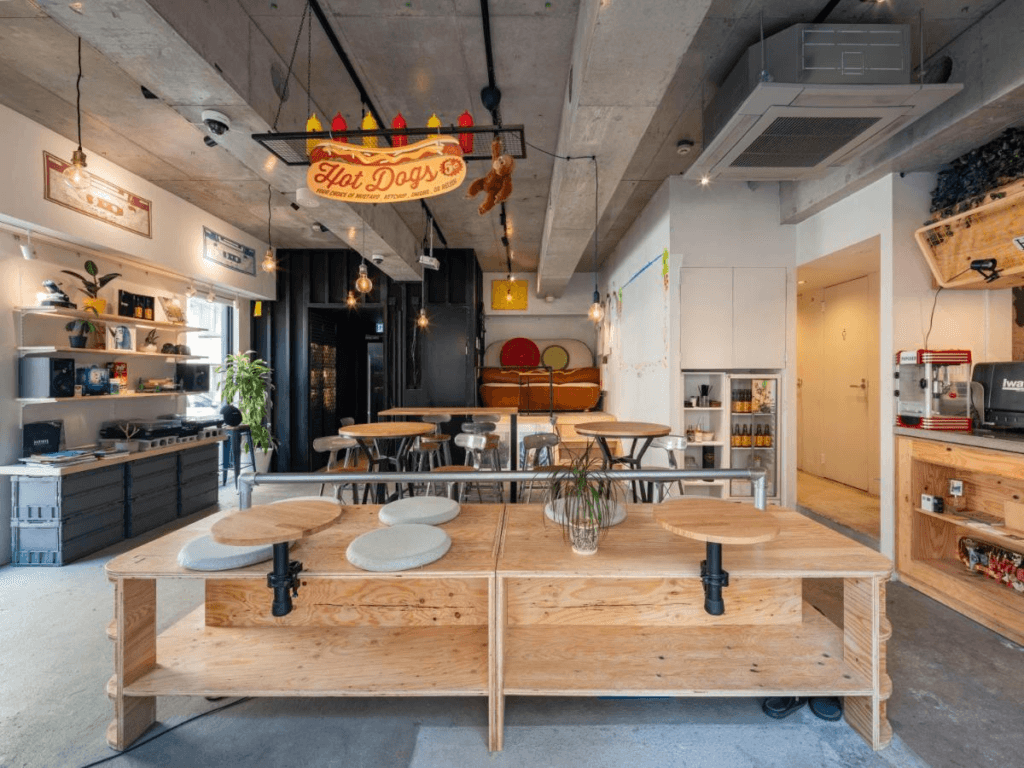
Artist Hotel – BnA STUDIO Akihabara is situated 300 meters from Horin Park and 500 meters from Origami Kaikan. The hotel offers uniquely designed rooms with modern amenities.
Backpacker’s Mini House (2 Stars)
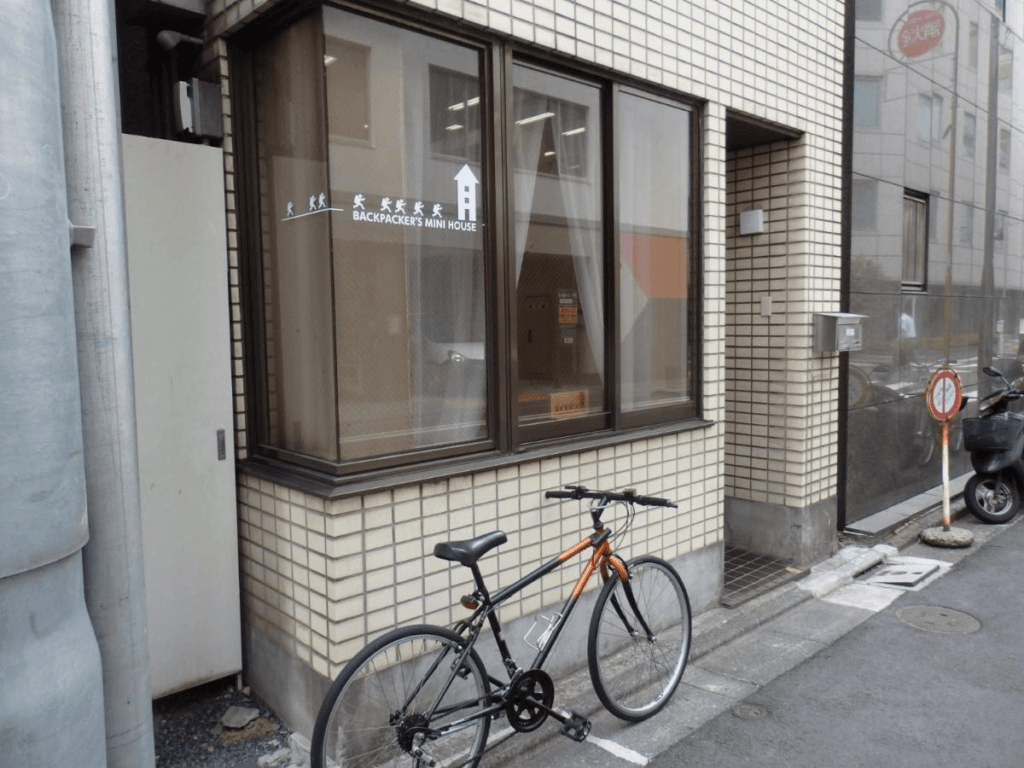
Backpacker’s Mini House is conveniently located 500 meters from Kanda Children’s Park and 600 meters from Bellesalle Kanda. The 2-star hostel offers air-conditioned rooms with shared bathrooms and free WiFi.
Manga Art Hotel, TOKYO (1 Star)
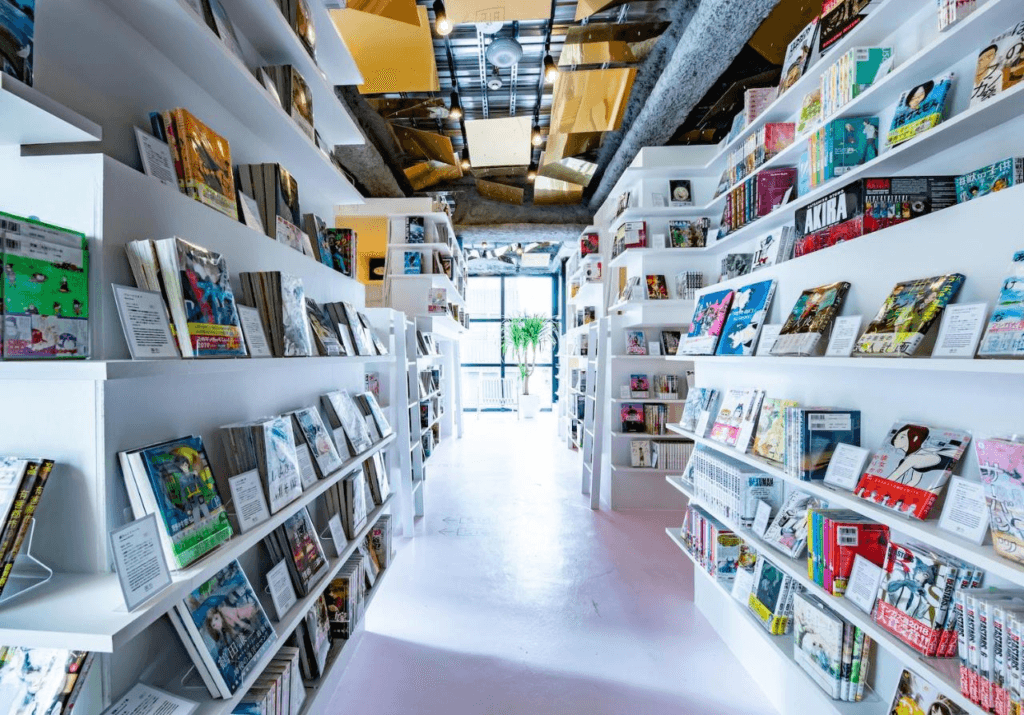
Manga Art Hotel, TOKYO is situated in central Tokyo, 300 meters from Goto Inari Shrine. The hotel offers air-conditioned rooms with free WiFi, featuring manga-themed décor.
Sakura Hotel Jimbocho (1 Star)
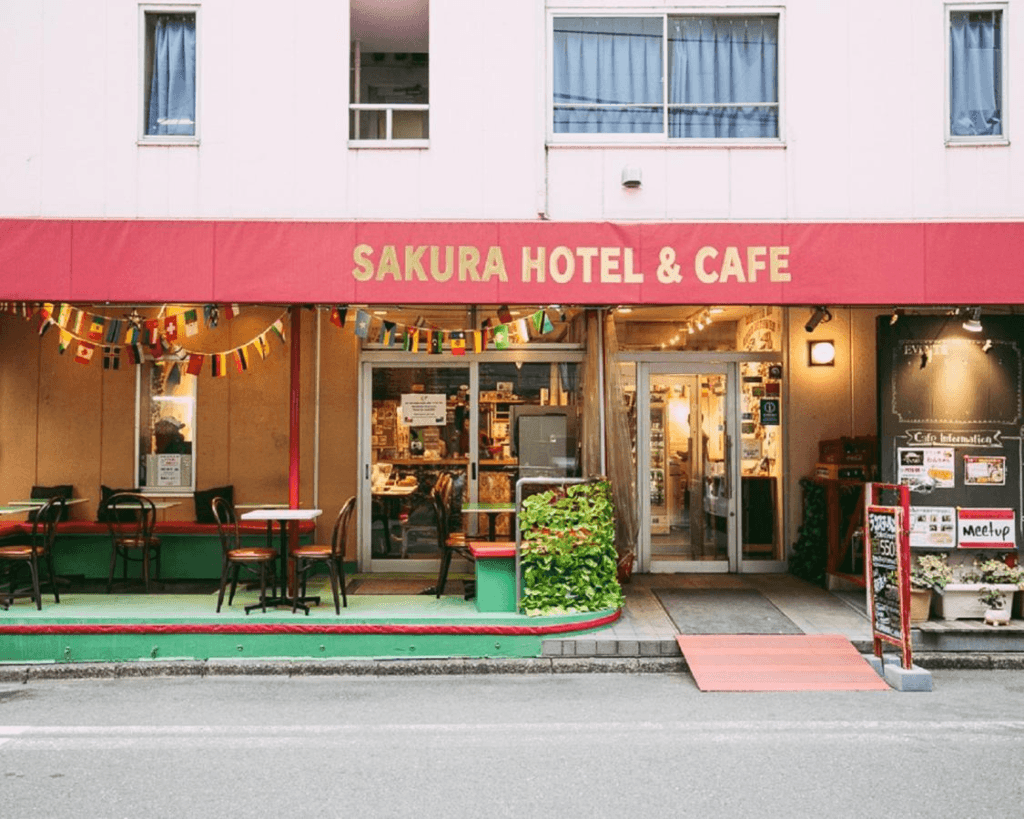
Sakura Hotel Jimbocho is located just a 2-minute walk from Jimbocho Subway Station. It offers international accommodation with friendly English-speaking staff and free WiFi throughout the property. The hotel is close to Nippon Budokan and the Imperial Palace, providing easy access to popular attractions.
Exploring Tokyo’s Heart
What do you think about Chiyoda Ward in Tokyo? Do you enjoy learning about the history and culture of this fascinating area of Tokyo? Chiyoda Ward offers a rich tapestry of historical sites, cultural landmarks, and unique experiences that make it a standout neighbourhood in the city. From the prestigious Imperial Palace to the bustling streets of Akihabara, there is something for everyone to explore.
This local neighbourhood boasts a mix of old and new, providing a glimpse into Japan’s past while offering modern amenities. The variety of festivals, museums, and parks ensures that visitors can immerse themselves in both tradition and contemporary life. If you’re interested in visiting Chiyoda Ward yourself, make sure to refer back to this blog for a comprehensive guide. With its blend of history, culture, and modernity, Chiyoda Ward is a must-see destination for anyone exploring Tokyo.

